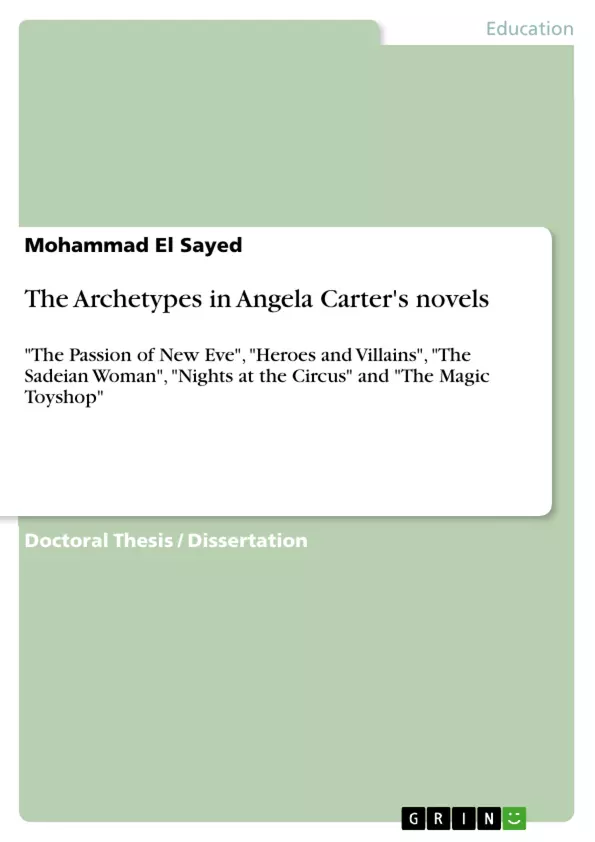The thesis discusses some of the archetypal themes, characters, and plots in selected novels by Angela Carter guided by the ideas of the Swiss Psychiatrist Carl Gustav Jung. The focus is on the novels "The Passion of New Eve", "Heroes and Villains", "The Sadeian Woman", "Nights at the Circus" and "The Magic Toyshop".
Angela Carter both conveys and challenges the traditional archetype within her multiple works of literature. Her work is the subject of literary attention and critique, specifically due to its approach to challenging male patriarchy and her choice of brusque language as her form of expression. Her novels present rather unconventional women and heroes’ journeys that are far from typical. Her shift from conforming to the typical offers an interesting dimension from which to assess her understanding of archetypes and the deliberate ways through which she destroys them through her writing.
Table of Contents
- Acknowledgements
- Introduction
- Chapter One
- The Archetypal Themes of Quest, Appearance and Reality, and Rebirth in The Passion of New Eve and Heroes and Villains
- Chapter Two
- The Archetypal Characters of Mother, Outsider, Trickster, and Hero in The Sadeian Woman and The Passion of New Eve
- Chapter Three
- Past and Present and Individuation as Archetypal Plots in Nights at the Circus and The Magic Toyshop
- Conclusion
- Bibliography
Objectives and Key Themes
This work aims to analyze the archetypal themes and characters in selected novels by Angela Carter, exploring how these universal patterns are employed to create rich and complex narratives. By examining the author’s use of archetypes, the study sheds light on Carter's literary techniques and the deeper meaning of her work.
- Archetypal themes in Angela Carter's novels
- The role of archetypal characters in Carter's narratives
- The intersection of archetypes with themes of gender, identity, and social change
- The impact of archetypes on the overall meaning and interpretation of Carter's works
- The relationship between Carter's use of archetypes and the broader literary and cultural contexts of her time
Chapter Summaries
Chapter One delves into the archetypal themes of quest, appearance and reality, and rebirth as they manifest in Carter's novels "The Passion of New Eve" and "Heroes and Villains." The chapter explores how these themes are interwoven with the narratives, contributing to the overall meaning and impact of the works.
Chapter Two examines the archetypal characters of Mother, Outsider, Trickster, and Hero in "The Sadeian Woman" and "The Passion of New Eve." It analyzes how Carter uses these characters to explore issues of gender, power dynamics, and social expectations.
Chapter Three focuses on the archetypal plots of past and present and individuation as they appear in "Nights at the Circus" and "The Magic Toyshop." The chapter discusses how these plots contribute to the themes of transformation, self-discovery, and the search for identity in Carter's works.
Keywords
The key concepts in this work include archetypes, Angela Carter, literary analysis, feminist literature, mythology, cultural studies, and the intersection of literature and psychology.
- Citation du texte
- Mohammad El Sayed (Auteur), 2019, The Archetypes in Angela Carter's novels, Munich, GRIN Verlag, https://www.grin.com/document/498325



